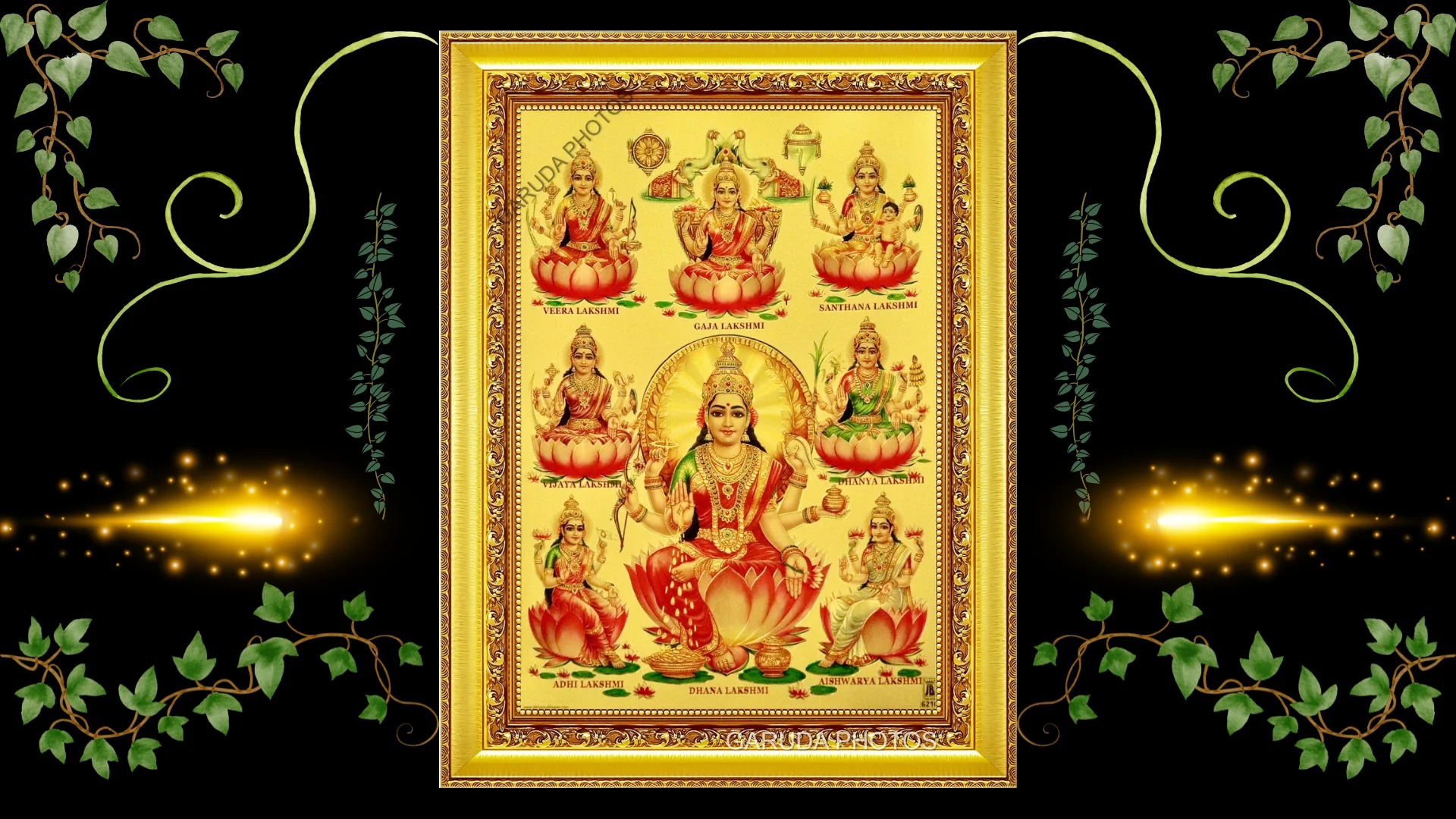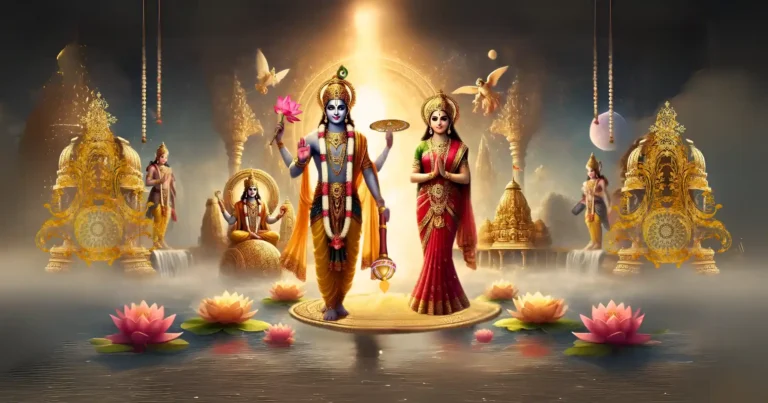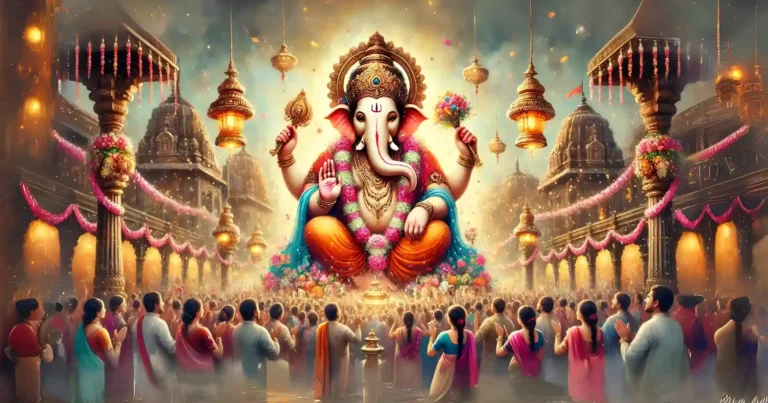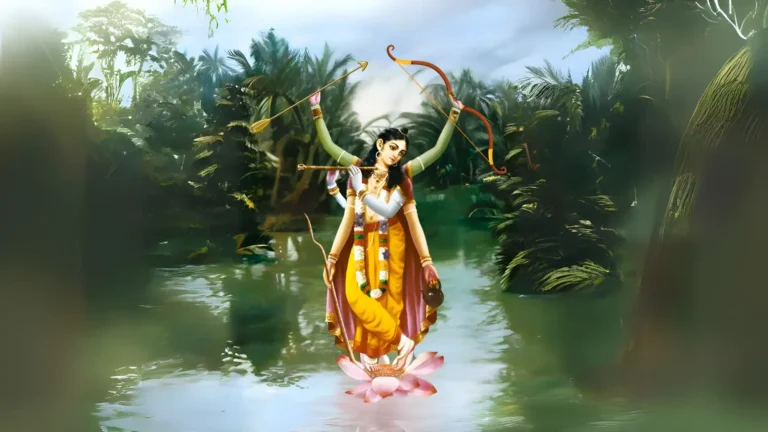Please Like the Blog and Share it for Maximum Reach
Table of Contents
Meaning of Sri Lakshmi
There is a common misconception about Goddess Lakshmi. Many believe that Laxmi Devi is the goddess of wealth alone. However, money is not the only blessing. She blesses one with inner wealth too.
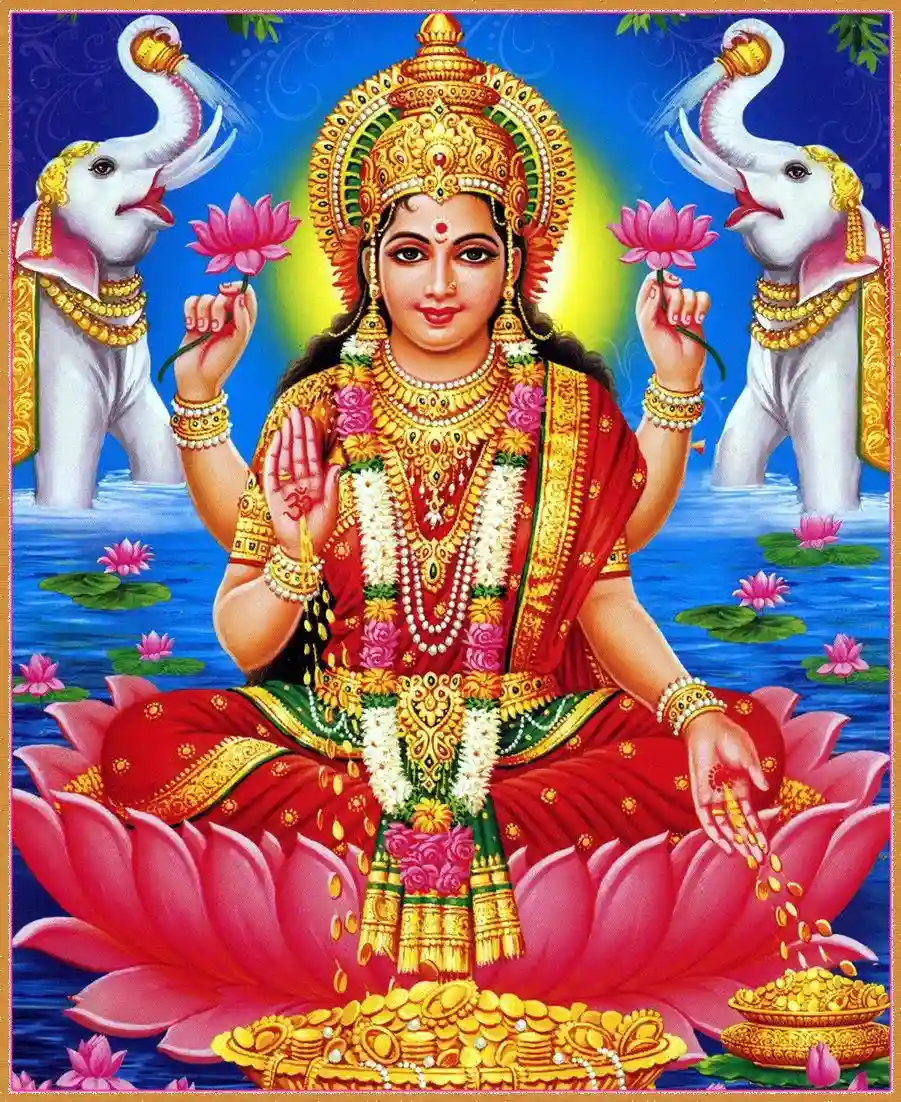
From the name Lakshmi comes the word Lakshya which means goal. Lakshmi Devi helps one attain one’s goal by providing the required resources. The eight manifestations of goddess Laxmi cover all the dimensions of existence. There are a total of eight verses in the Ashtalakshmi Stotram dedicated to each manifestation of the Ashtalakshmi.
Fundamental Rules for Ashtalaxmi Stotram
You can chant this Stotram at any time of the day. There are no day restrictions. However, you need to follow a strict vegetarian diet without onion and garlic.
Do not smoke or drink during this period. Laxmi Devi enters the house only where there is cleanliness. That is why during Dhanteras, businessmen renovate their houses for a better flow of wealth.
Note that material benefits should not entice the sadhaka. Laxmi Devi is our eternal mother. We should worship her purely to gain her love and affection. Wealth only flows where there is cleanliness and purity of intention. Mother Lakshmi is also very pleased when one venerates her husband Narayana. You may also want to watch our video titled Narayana- The True Friend of His Devotees | How Lord Vishnu Appreciates His Devotees?
The First Form of Sri Laxmi-Adi Laxmi
There is a commonality in the Ashtalakshmi.
All are seated on a pink lotus. The pink lotus symbolizes a new beginning. Even lord Brahma sits on a pink lotus as he is the creator. Now, I shall cover the eight forms of Laxmidevi and highlight the benefits of reciting each verse. The first manifestation of Laxmi Devi is Adi Lakshmi. Adi means Primeval.
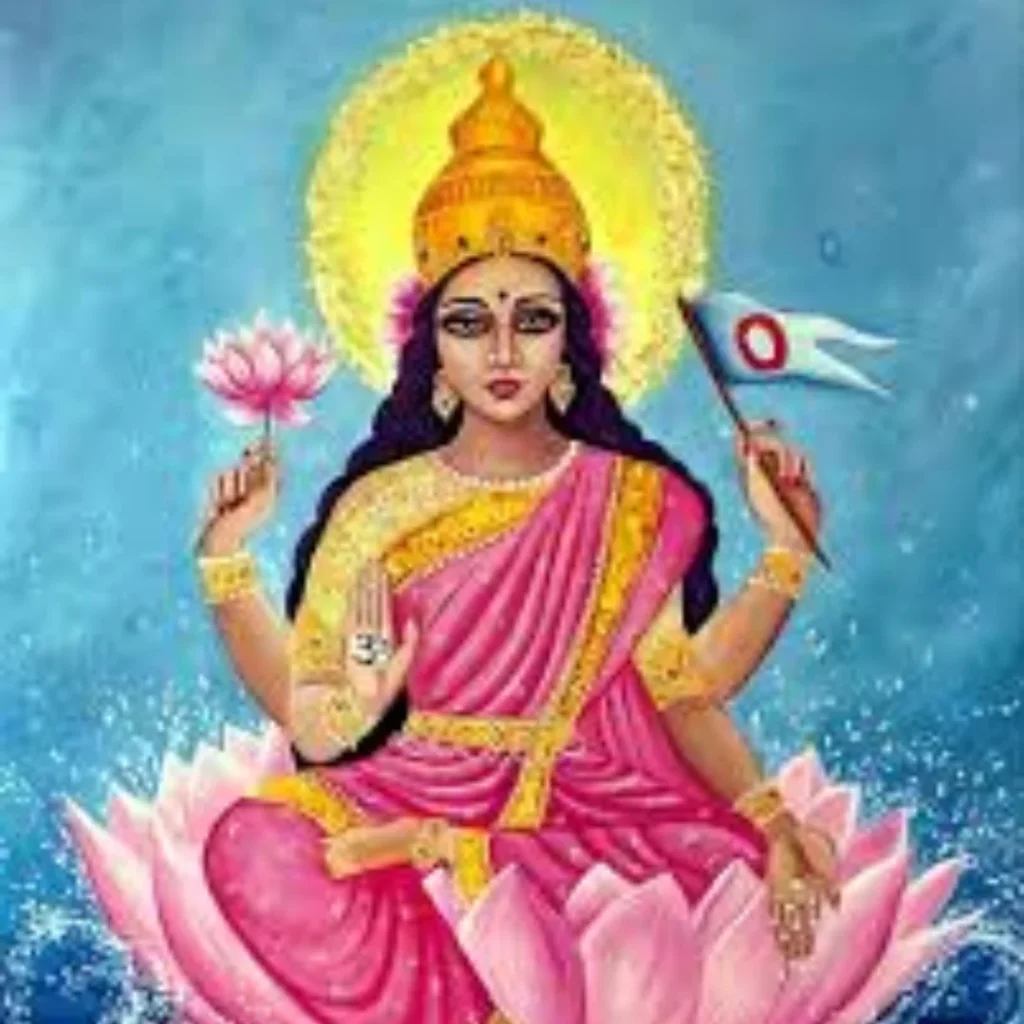
Also known as Mahalakshmi, Adi Laxmi helps the Sadhaka reach his source and blesses one with enlightenment. She opens the doors to eternal bliss and peace helping one realize the impermanence of the world. As a result, one spontaneously develops dispassion.
Mahalakshmi Suitable for Moksha
Reciting the Ashtalakshmi Stotram is thus very suitable for Moksha. Now, let me describe the form of Adi Laxmi. Adi Laxmi is a four-armed goddess. Her lower hands are in the Abhaya and Varada mudra which is commonly seen in most of the Sanatana Dharma deities.
She holds a lotus and a flag with a sun symbol on it. The lotus depicts motherly affection while the sun symbol on the flag represents Dharma or the path of righteousness. Know that Adi Laxmi can be equated to Brahman or the supreme goal of all spiritualists.
The Second Form of Sri Laxmi- Dhana Laxmi
The second form of the goddess is Dhana Laxmi.
As most of us know, Dhana means wealth. However, Dhana also refers to inner wealth, Dhana Lakshmi represents qualities like truthfulness, honesty, dedication, and so on. There are many representations of Dhana Lakshmi. Many times people misrepresent her as Gaja Laxmi since there are gold coins flowing from her palm too. Know that Dhana Lakshmi is six-armed while Gaja Laxmi has four arms.
She holds a disc and a conch symbolizing creation originating from the sound Aum. The disc symbolizes the passage of time or Kala. She blesses one with creativity in order to generate wealth for sustenance. The lower hands wield a bow and arrow which protect the devotee from all calamities. The three-fold calamities are Adidaivik, Adhibhautik, and Adhyatmik.
To know more, you can watch our video titled’ What is Adidaivik, Adhibhautik and Adhyatmik? | Vaishnavas and the Two Types of Bhakti’.
The Third Form of Sri Laxmi- Dhanya Laxmi
The third form of Lakshmi Devi is Dhaanya Laxmi. Dhaanya refers to grains.
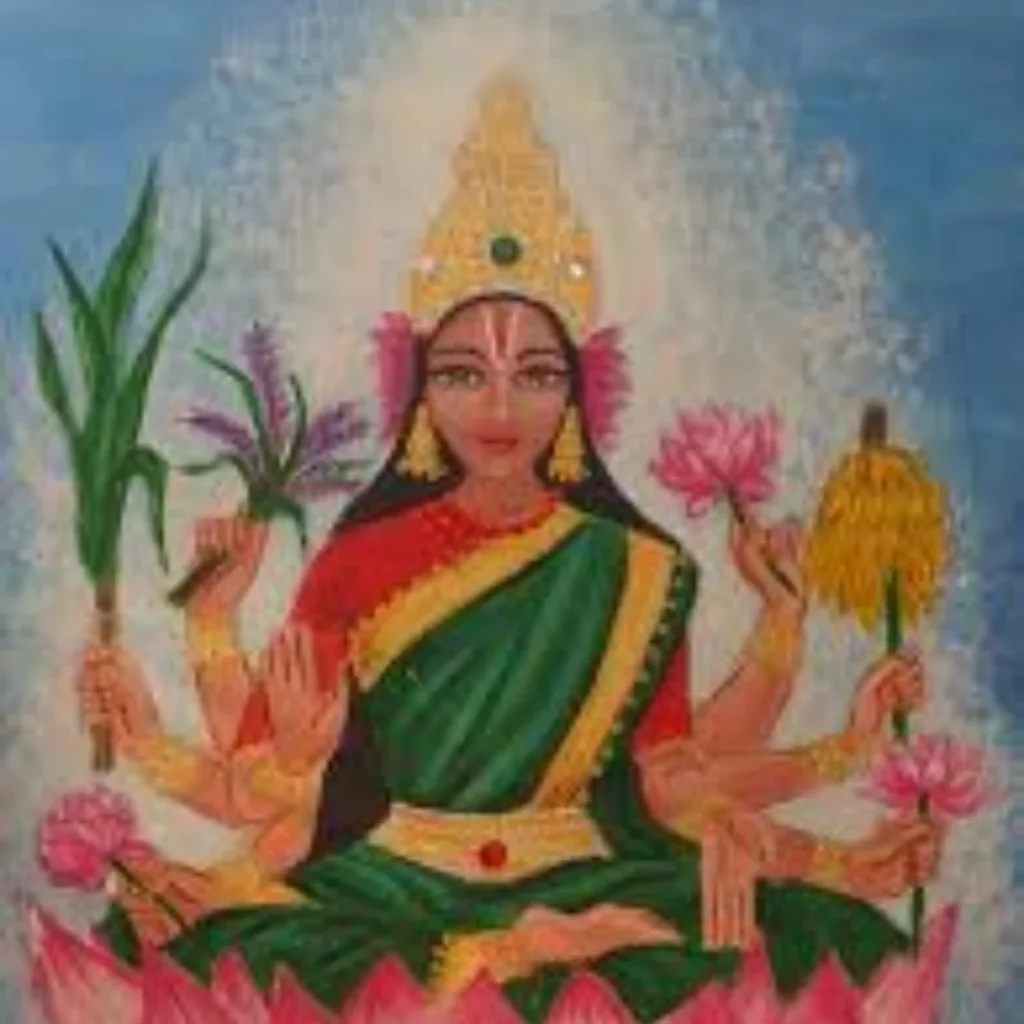
In a house where Dhaanya Lakshmi is worshipped, there shall be no shortage of grains. Dhaanya Laxmi represents India as an agricultural nation. She has eight arms. Needless to say, she holds bananas, sugarcane, mace, wheat crops, and two lotuses. Her remaining two hands are in the Abhaya and Varada mudra. Even Lalitha Devi is depicted holding sugarcane.
You can watch our video titled Benefits of Lalitha Sahasranamam | Miracles of Lalitha Sahasranamam.
8 Questions from Sanatana Dharma
The scores generated in this Quiz are absolute. There are right or wrong answers to each Question. A percentage towards 100 indicates that you are more aligned to the overall subject matter.
The Fourth Form of Sri Laxmi- Gaja Laxmi
The fourth form of Lakshmi devi is Gaja Laxmi. According to the Puranas, Gajalakshmi revived Indra’s glory during the churning of the Ocean. Gaja Lakshmi has two elephants by her side, one male and one female indicating leadership and royalty.
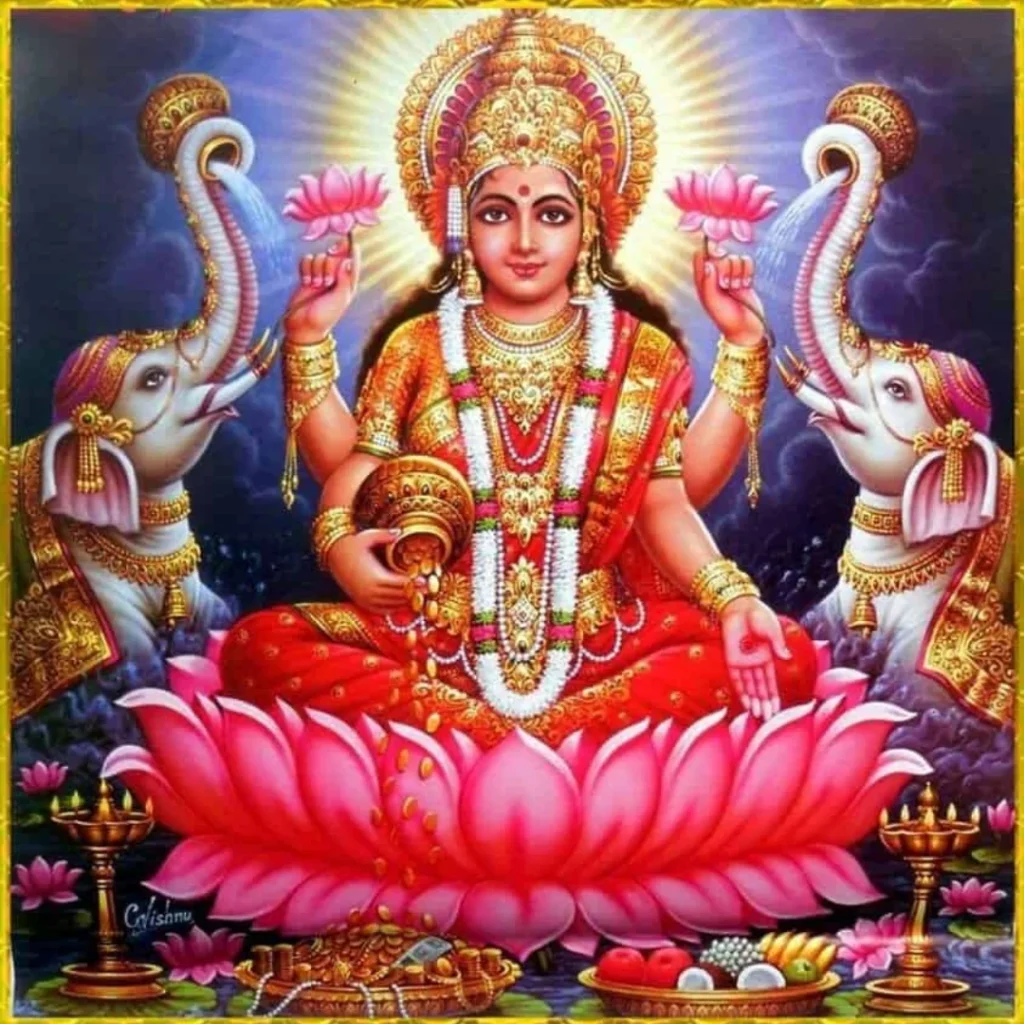
In the Vedic era, cattle, horses, and elephants were considered as real wealth. Excavations have proved this fact. Elephant also represents lust. Thus, Gaja Lakshmi helps one conquer the enemies of lust, anger, and greed. An ancient metaphor to describe a maiden is Gajagamini- which means the gait of an elephant. Gajalakshmi grants both beauty and wealth.She is auspicious for animal husbandry as well.
The Fifth Form of Sri Laxmi- Santana Laxmi
The fifth form of the goddess is Santana Laxmi. As the name suggests, Santana means offspring. In her upper two hands, she holds a Kalasha. With her hand, she very lovingly holds a boy child. A baby boy is considered to be the greatest treasure. On the contrary, she is also depicted with a sword and a shield.
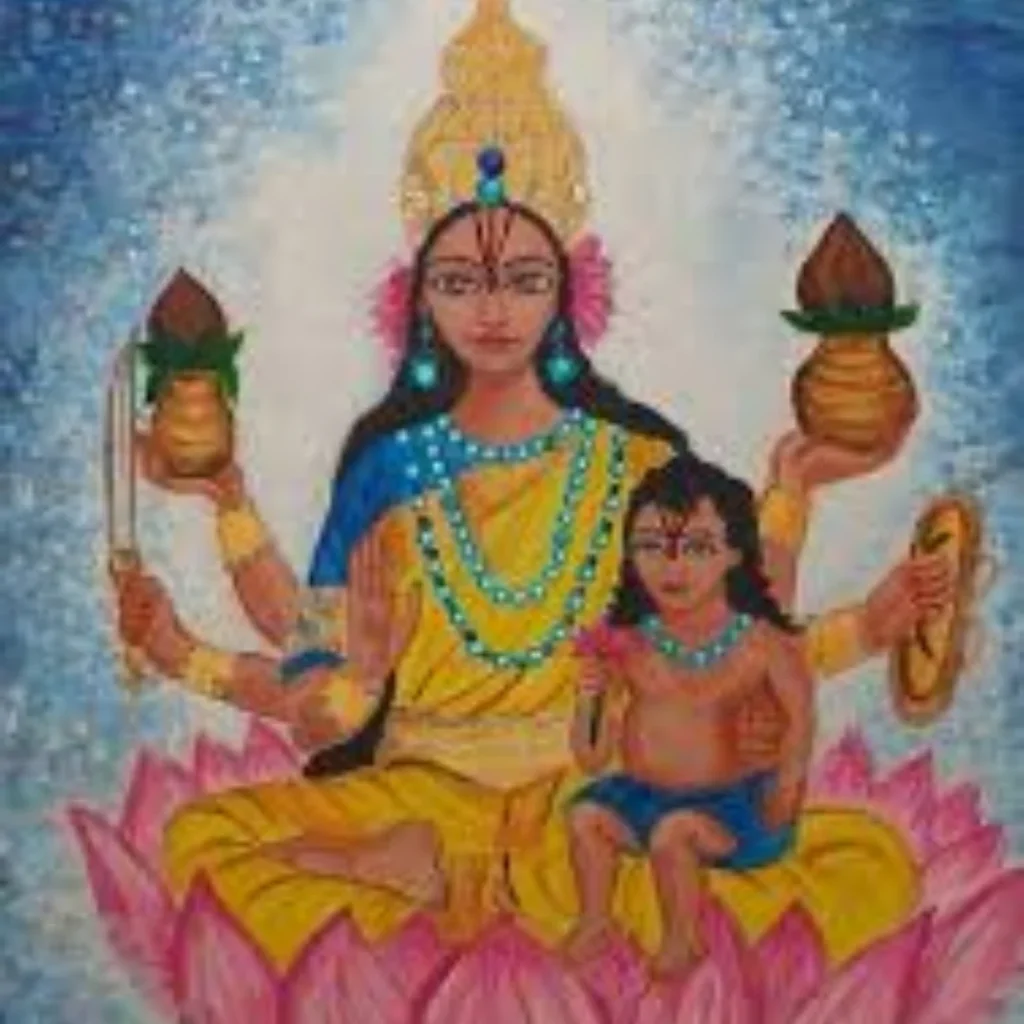
It is a very unique representation. A child represents feminine energy whereas a sword and a shield represent masculinity. Santana Laxmi thus keeps the feminine and masculine energies in balance. The goddess gives one the power to look after progeny and shield them from antisocial elements. Like a protective mother, she also bestows the virtue of parenting. The child holds a lotus symbolizing the boon of obedient progeny.
One of her hands is in Abhaya mudra to grant fearlessness to her devotees.
The Sixth Form of Sri Laxmi- Veera Laxmi
The sixth form is Veera Lakshmi. Veera means bravery. This form of Lakshmi devi grants various boons. Also known as Dhairya Lakshmi which means Courage, the goddess is beautifully dressed in red. Seated on a pink lotus she protects her devotees with the weapons she carries in her hands. In her upper two hands, she holds a disk and a conch akin to Mahavishnu.
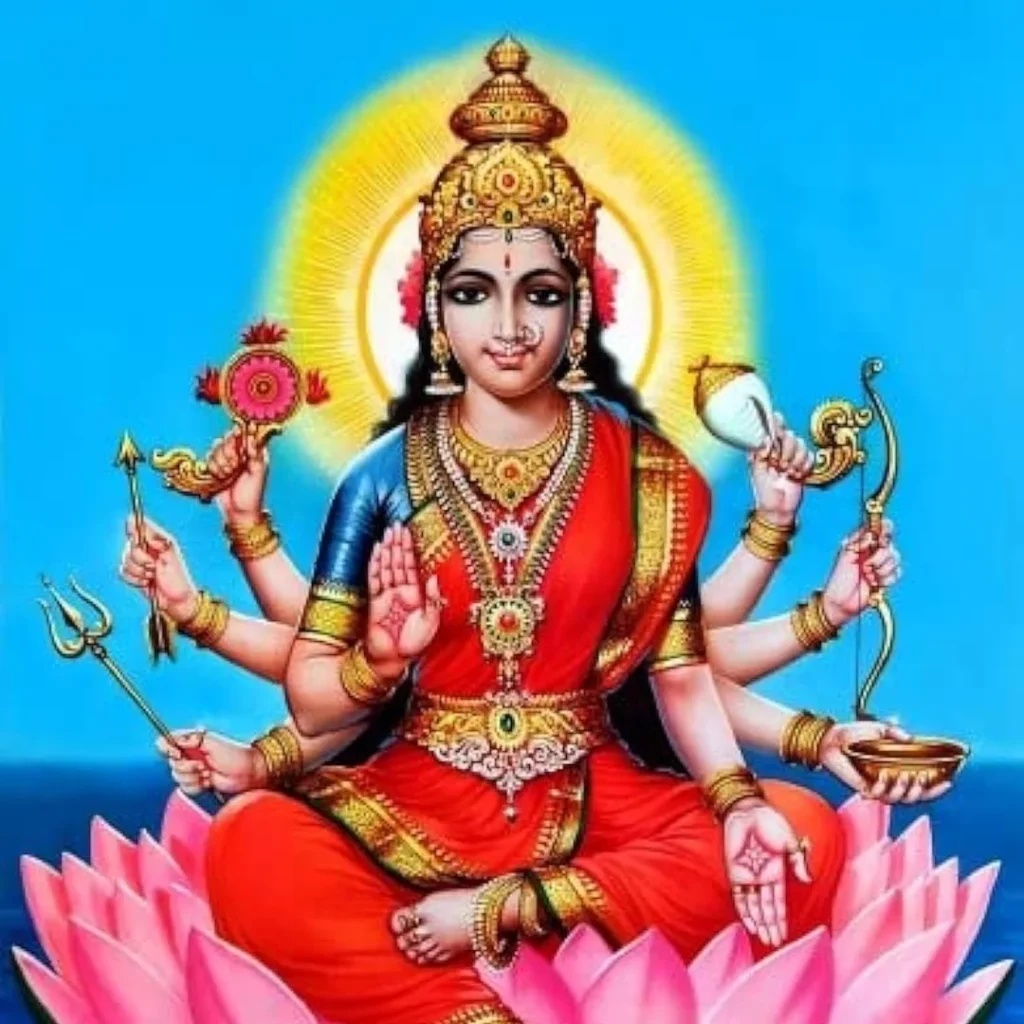
She wields weapons such as the trident, bow, and arrow. Her hands are in the Abhaya and Varada mudra, always ready to greet her devotees.
The Seventh Form of Sri Laxmi- Vidya Laxmi
The seventh form of Lakshmi devi is Vidya Lakshmi. This form of the goddess grants Vidya or divine intelligence. Her representation is very plain. Her upper hands hold two lotuses while her lower hands are in the Abhaya and Varada mudra.

She blesses one with knowledge and is ideal for students who wish to activate cognitive faculties in both creative and analytical fields.
The Eighth Form of Sri Laxmi- Vijaya Laxmi
The eighth form of Lakshmi Devi is Vijaya Lakshmi. Vijaya means victory. She is the eight-handed goddess wielding the Sudarshan chakra, conch, sword, shield, noose, and lotus.
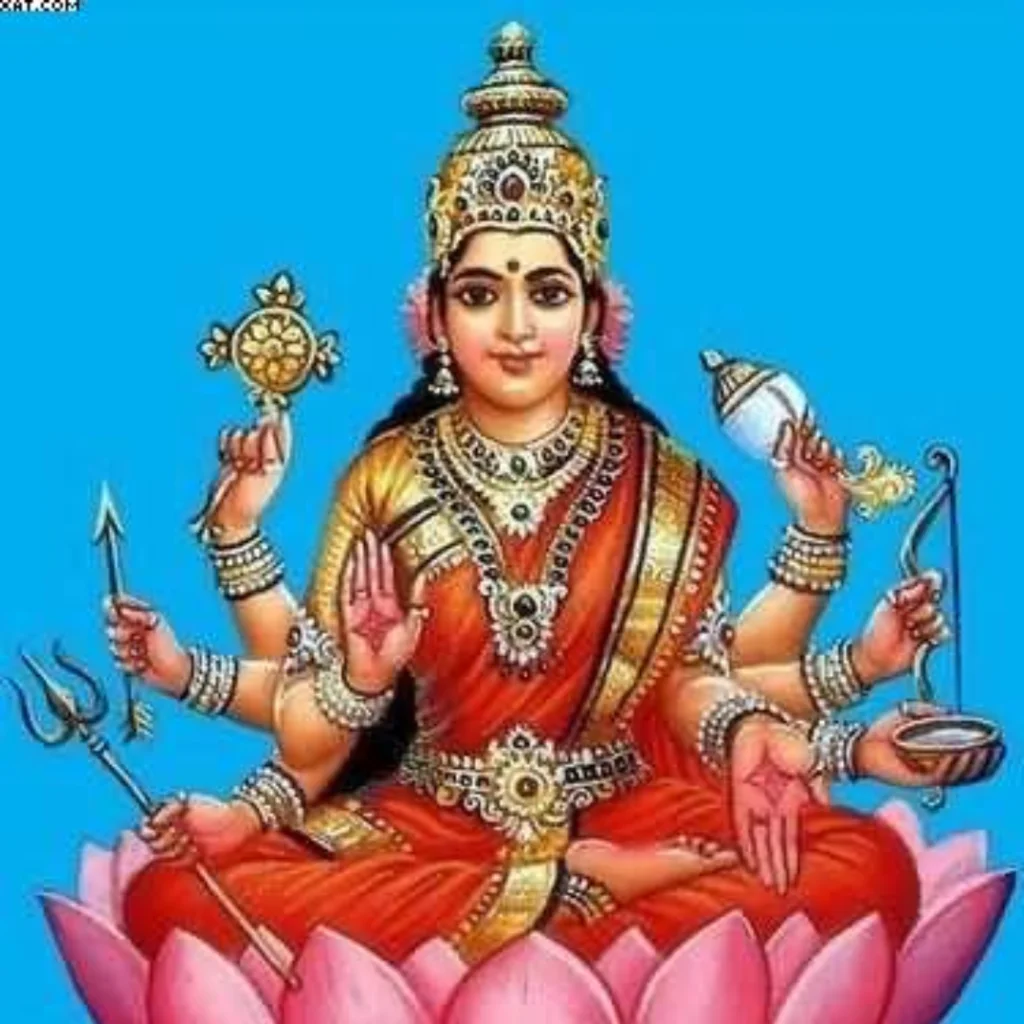
Her other two hands are in the Varada and Abhaya mudra. She is dressed in red symbolizing victory in both spiritual and material walks of life.
Please Like the Blog and Share it for Maximum Reach

